Bontrager road accessories - a comprehensive range overview
A guide to the Bontrager parts and accessories that come out of the big red barn in Waterloo
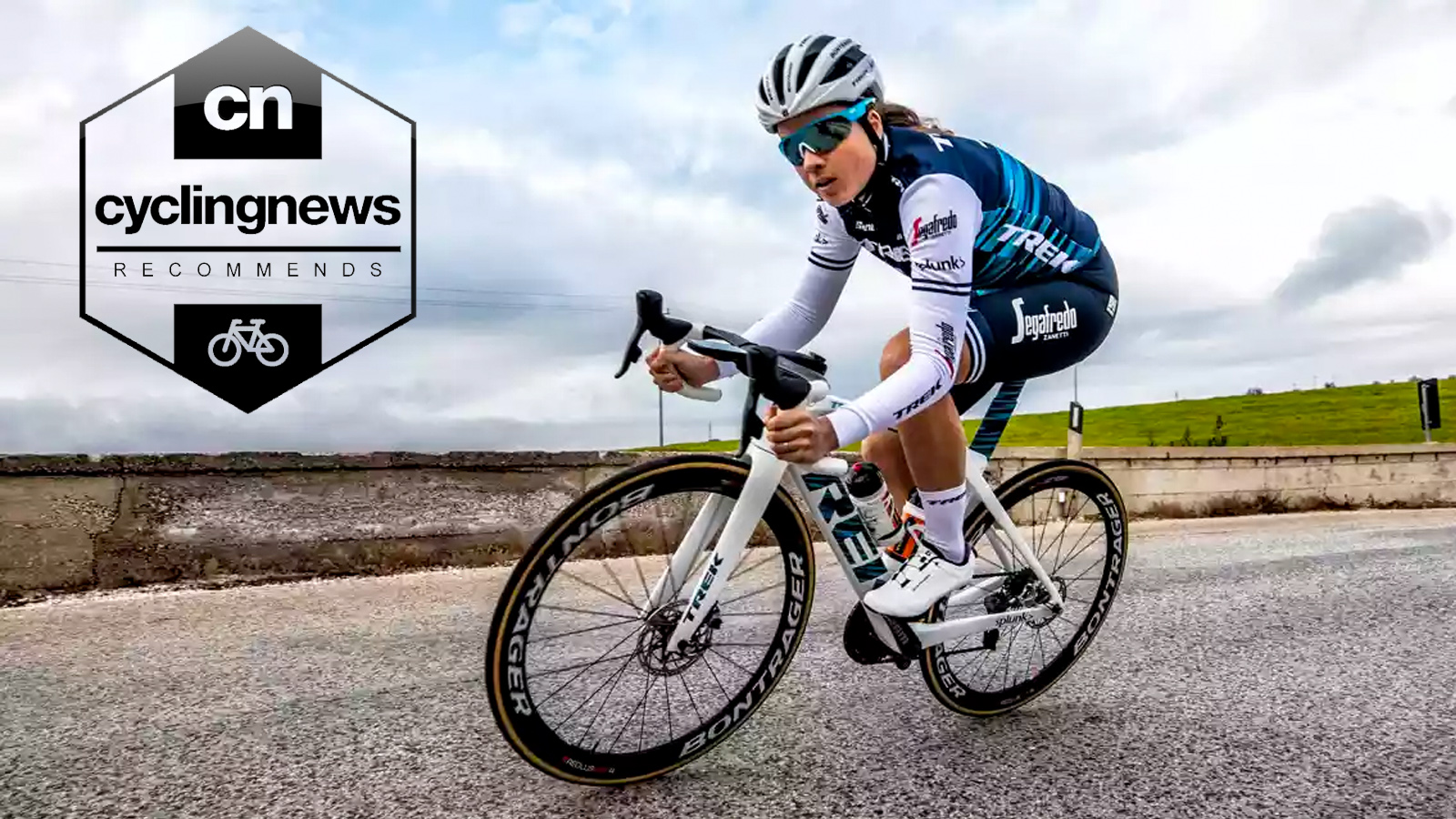
Serving Trek’s in-house component brand, Bontrager makes everything from wheels and handlebars to helmets and lights. Founded in the 1980s by Keith Bontrager, who built some of the most sought-after steel mountain bike frames before Trek purchased his brand in the early 1990s.
Owing to the connection to Trek, it's perhaps unsurprising to see Bontrager components hanging from the frames of Trek Segafredo riders such as Richie Porte and road world champion Mads Pedersen.
Lights
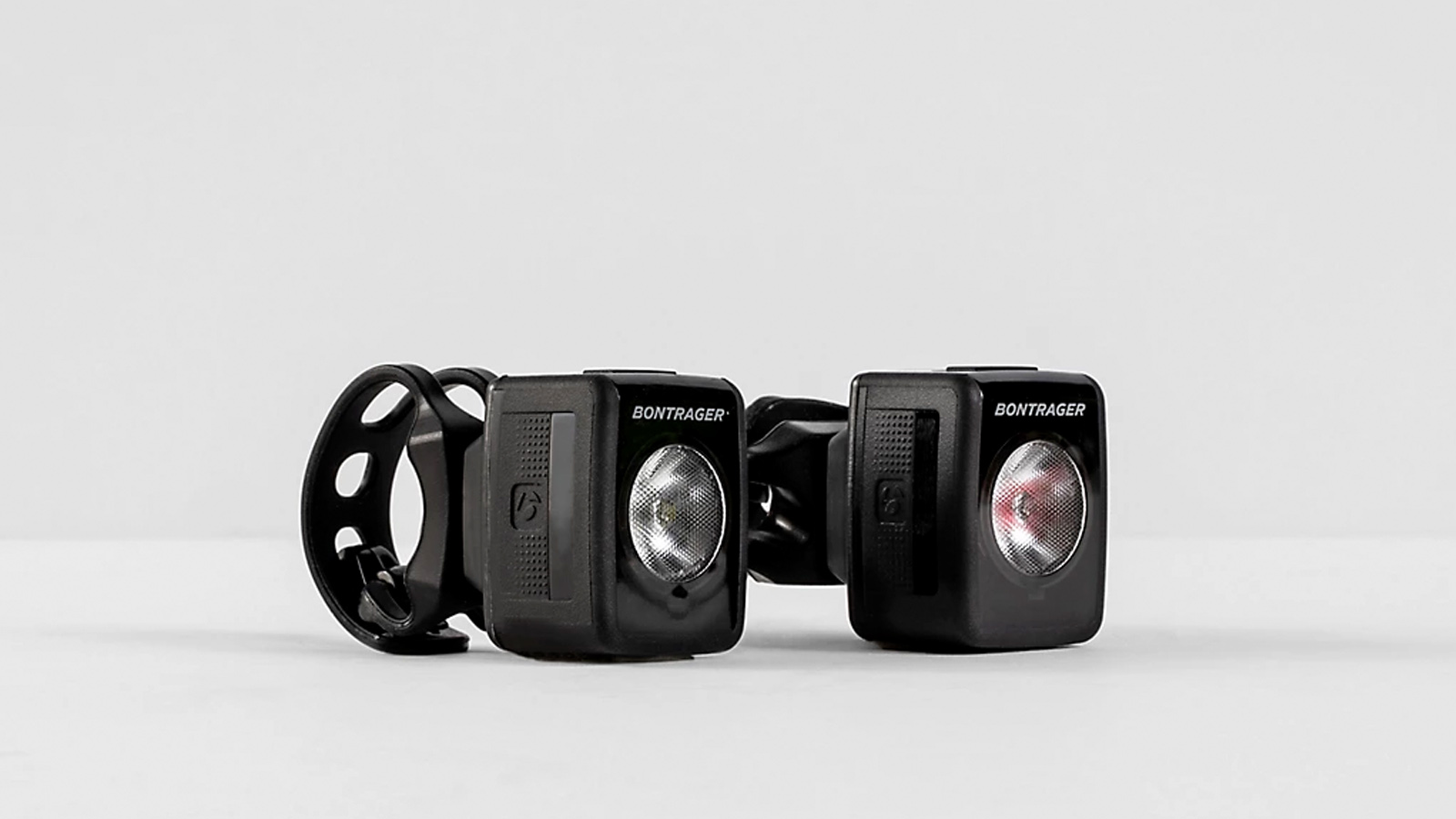
Flare RT and Ion RT
Specifications
Reasons to buy
Reasons to avoid
Bontrager’s Flare RT rear light only has a 90-lumen output, however with some clever optics it is one of the most visible lights on the market — claimed to be visible from up to 2km away in broad daylight.
The newer RT version is more compact than its predecessor and it's lighter too, tipping the scales at just 40g. The battery is claimed to last up to 12 hours in all-day flash mode, and when the light begins to run out of juice it enters low power mode, which will give you an extra 30 minutes to make sure you get home. It's ANT+ enabled and speaks the same language as your Garmin head unit to communicate battery status and control.
The Ion 200 RT front light has most of the same features and is based around the same form factor but ups the power to 200-lumens. Both of these lights fall squarely in the 'to be seen' category rather than 'to see', for more info check out our guide on the best bike lights.
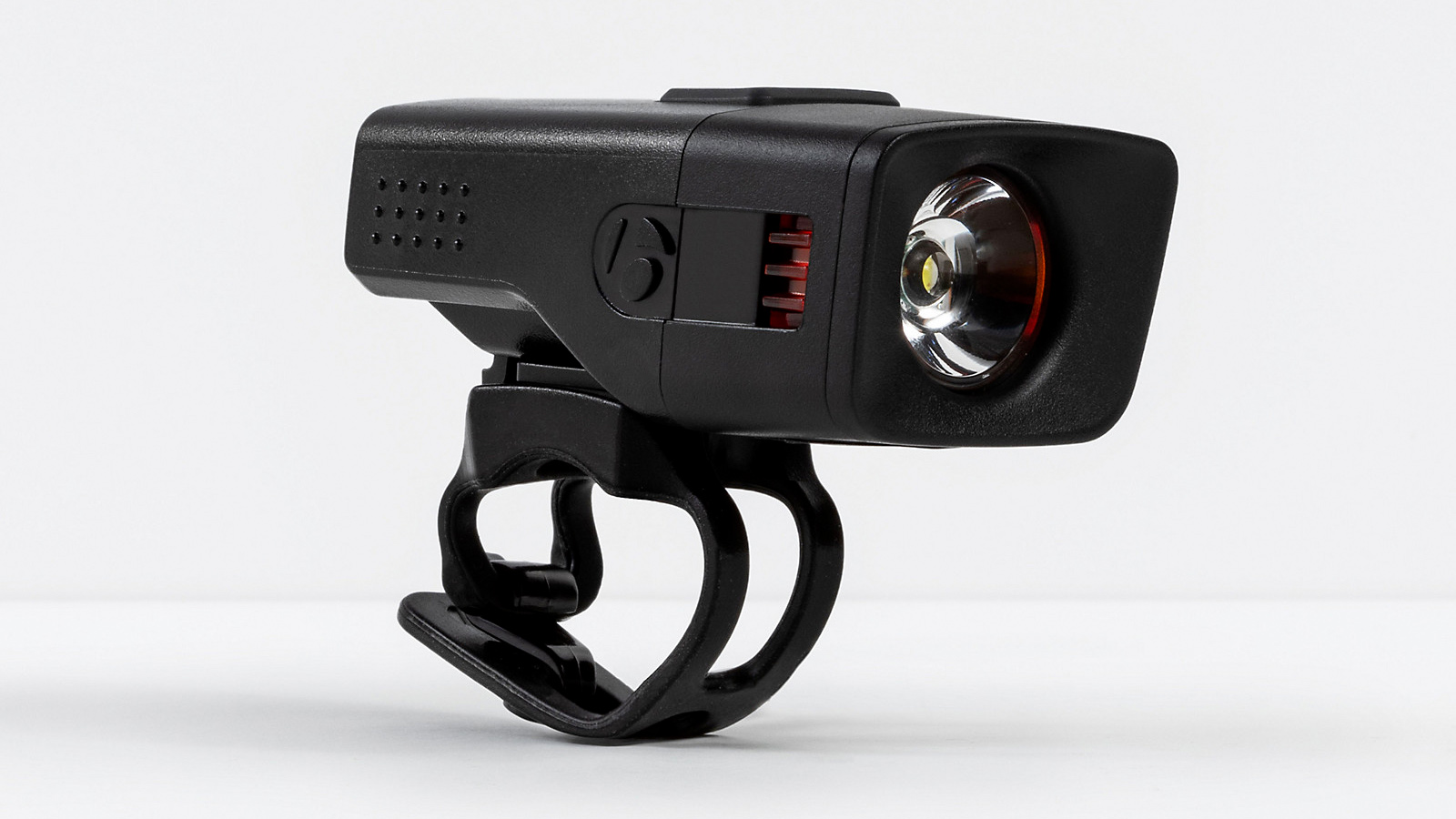
Ion 450 R Front light
Specifications
Reasons to buy
Reasons to avoid
Falling into both the 'to see' and 'to be seen' category, with a 450-lumen output the Ion 450 R is ideal for commutes or road rides. At its brightest the rechargeable battery will last one and a half hours, stretching to 10-hours on flash mode, but the optics are tuned so that the light is visible 2km away.
The included silicon quick connect mount works with bars of all shapes and sizes, and the light also plays nice with Bontrager's Blendr mounting system. At 100g it's not a porker, with only a minor footprint on your cockpit.
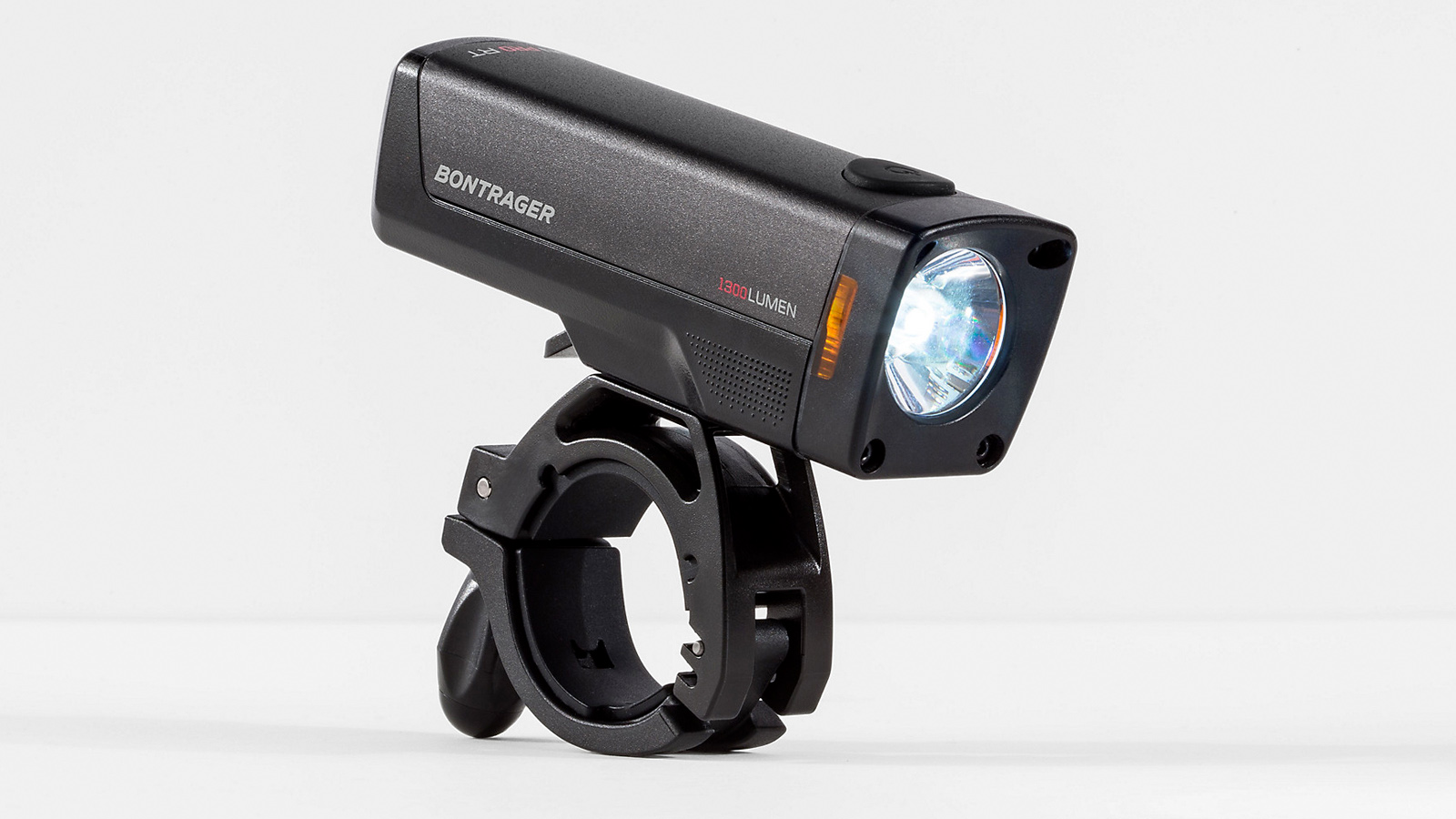
Ion Pro RT
Specifications
Reasons to buy
Reasons to avoid
The Ion Pr RT is a £100 / $124 / AU$180 light that throws down an impressive 1000-lumens, it has a beam shape that’s ideal for illuminating the road or trail but can also be spotted from 2km away. Weighing 187g it will happily sit on your bars or on top of your helmet and the mount utilises a chunky thumbscrew that’s actually big enough to use while wearing gloves, but also has a stop at the end so you don’t lose the nut.
The beam is quite warm in colour, and forms more of a spot than a flood while small windows on the side add lateral visibility. At full bore, the lithium-ion rechargeable battery will last about an hour-and-a-half and nearly 26-hours on nighttime flash.
Tyres
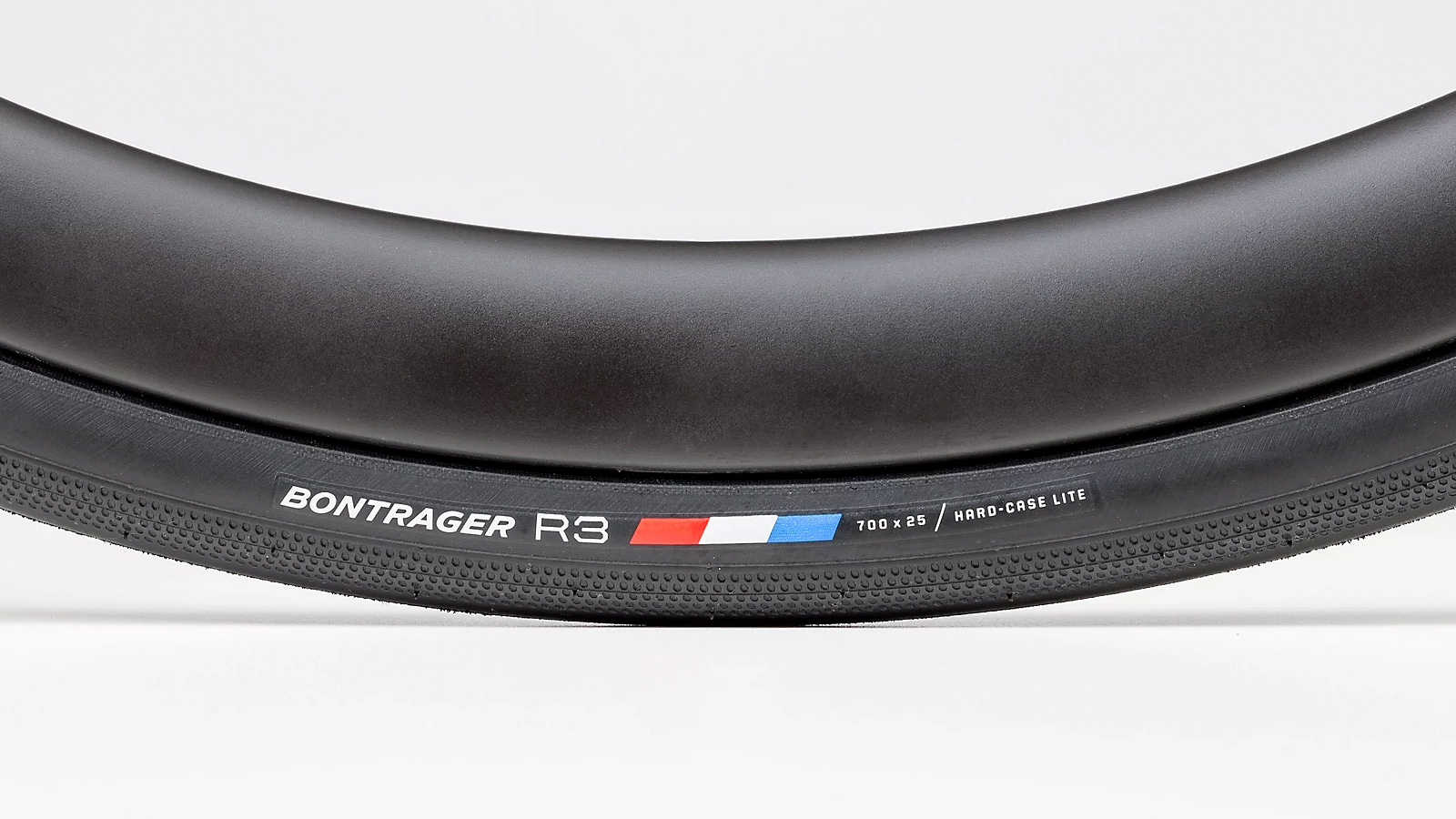
R3 Hard-Case TLR
Specifications
Reasons to buy
Reasons to avoid
The R3 Hard-Case TLR is Bontrager’s latest road tyre and the brand has taken an interesting approach to its R3 range. It's available in 23c up to 32c but rather than offer the same tyre in a range of widths, the shoulder tread on the R3 increases as the casing gets wider.
To our mind this makes perfect sense; as tyres get wider, the less consistent the road surface is going to be and you’re likely to need more grip in the corners. The centre strip is still perfectly smooth for minimal rolling resistance and Bontrager has utilised a brand new TR-Speed rubber compound that's claimed to reduce rolling resistance and increase durability. There is also a new Nylon 105 breaker belt, and they are tubeless too.
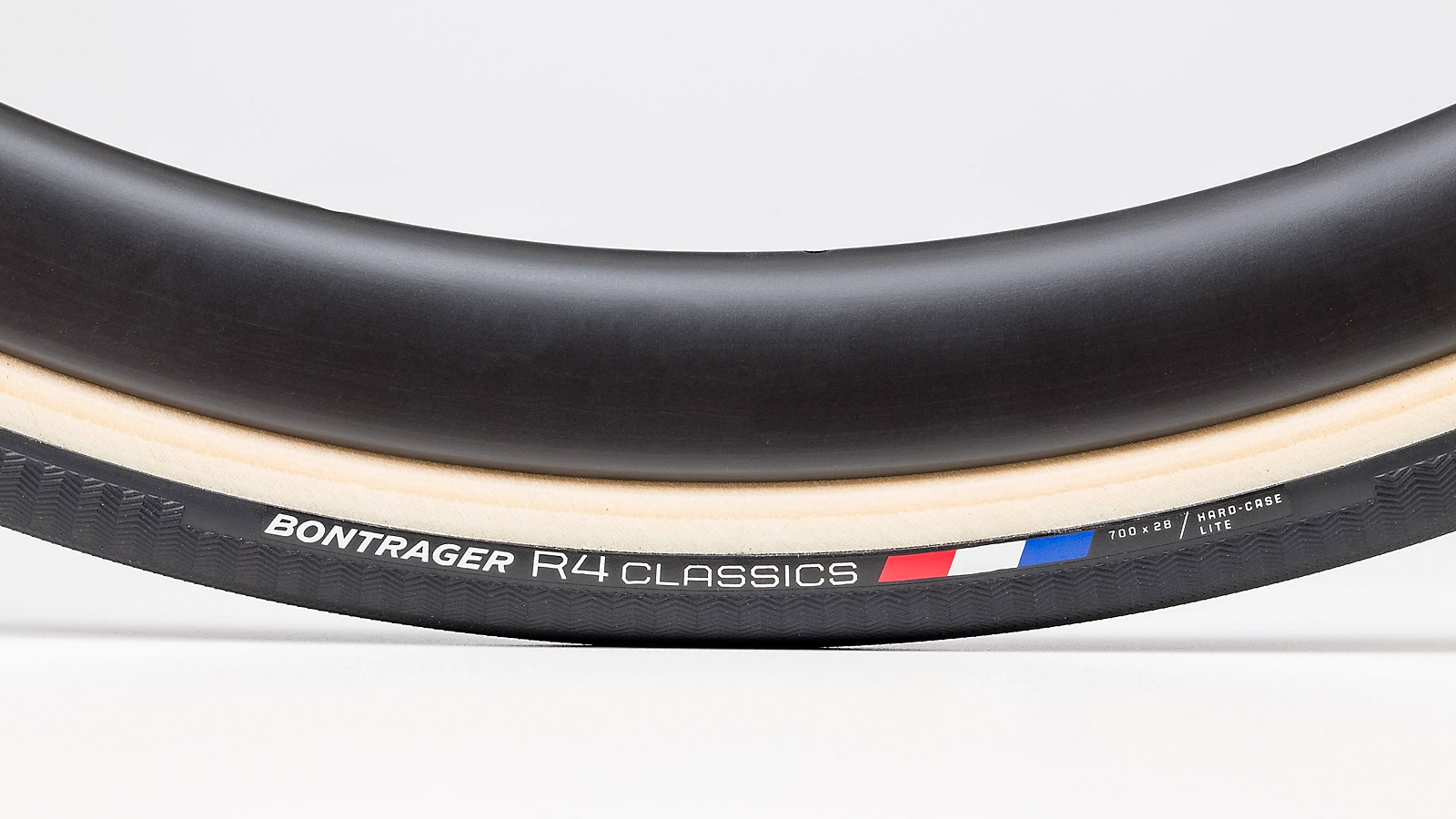
R4 Classic Hard-Case Lite
Specifications
Reasons to buy
Reasons to avoid
Nothing rides quite like a 320TPI, hand made tyre with a cotton casing and that’s precisely what the R4 provides — plus it can be set up without a tube for an even more supple ride quality. It is the exact same tyre used by Trek Segafeado during the classics, except in clincher form.
They only come in a 28c size, the Hard-Case Lite carcass with the polyamide synthetic fibre reinforcement adds puncture protection, and it's backed by the sealant inside to seal up holes before you even know they are there. It only takes about 100m to realize this is a fast-rolling, high-grip tyre.
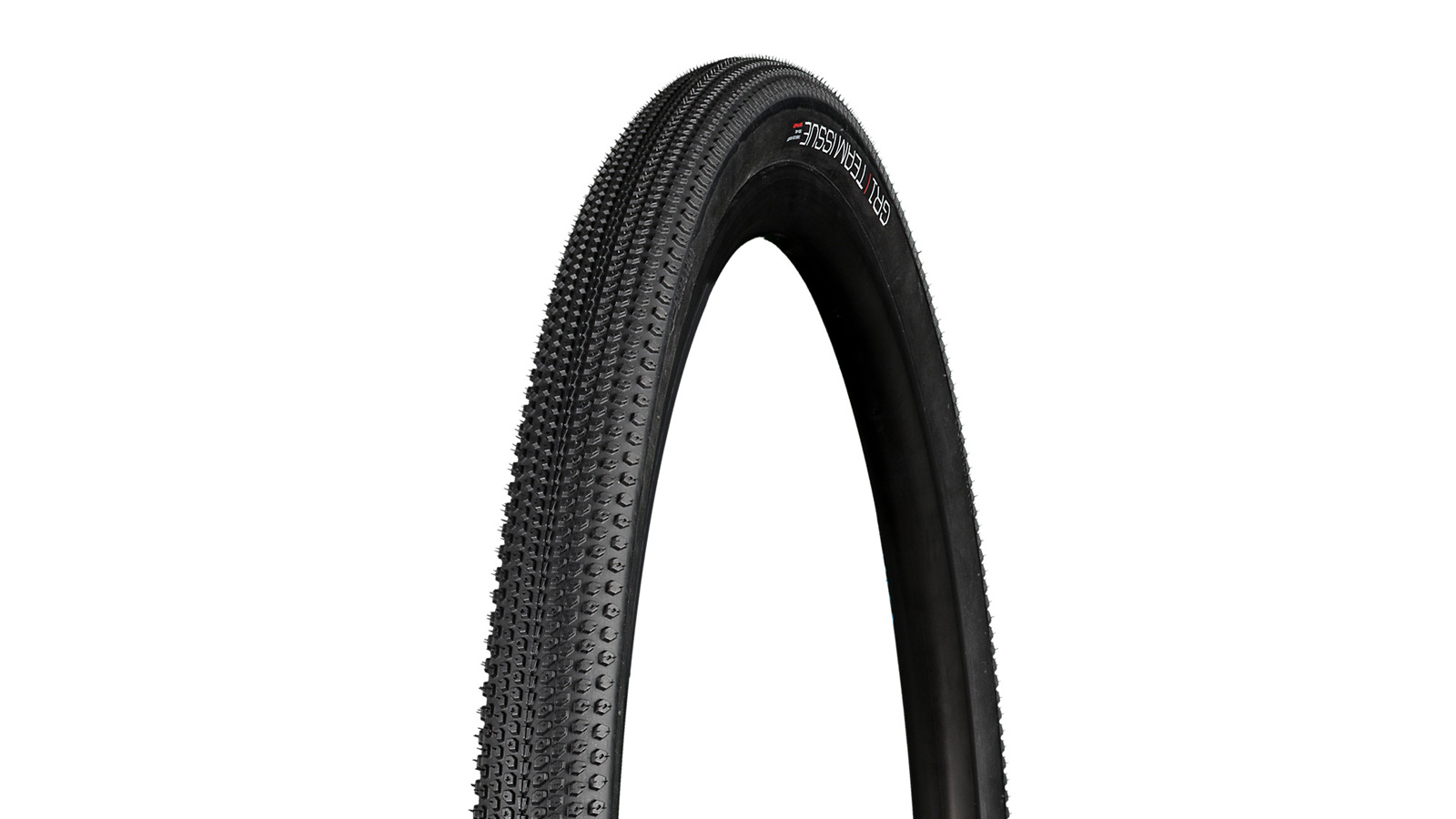
GR1 Team Issue Gravel
Specifications
Reasons to buy
Reasons to avoid
Available in 35mm and 40mm versions the GR1 Team Issue is a lightly treaded tyre, with tightly packed knobbies throughout — ideal for dry conditions. Up the middle, there is a row of arrow-shaped tread, with the blocks getting larger, broader and better supported as you move towards the edge. With this pattern, there is a consistent bite at any lean angle, but if it’s wet the casing will mud up lickety-split.
The smaller casing comes in a very fashionable tan wall, while the plumper rubber is black only, and the supple casing provides burp free riding at low pressure that’s surprisingly resistant to cuts and gashes.
Wheels
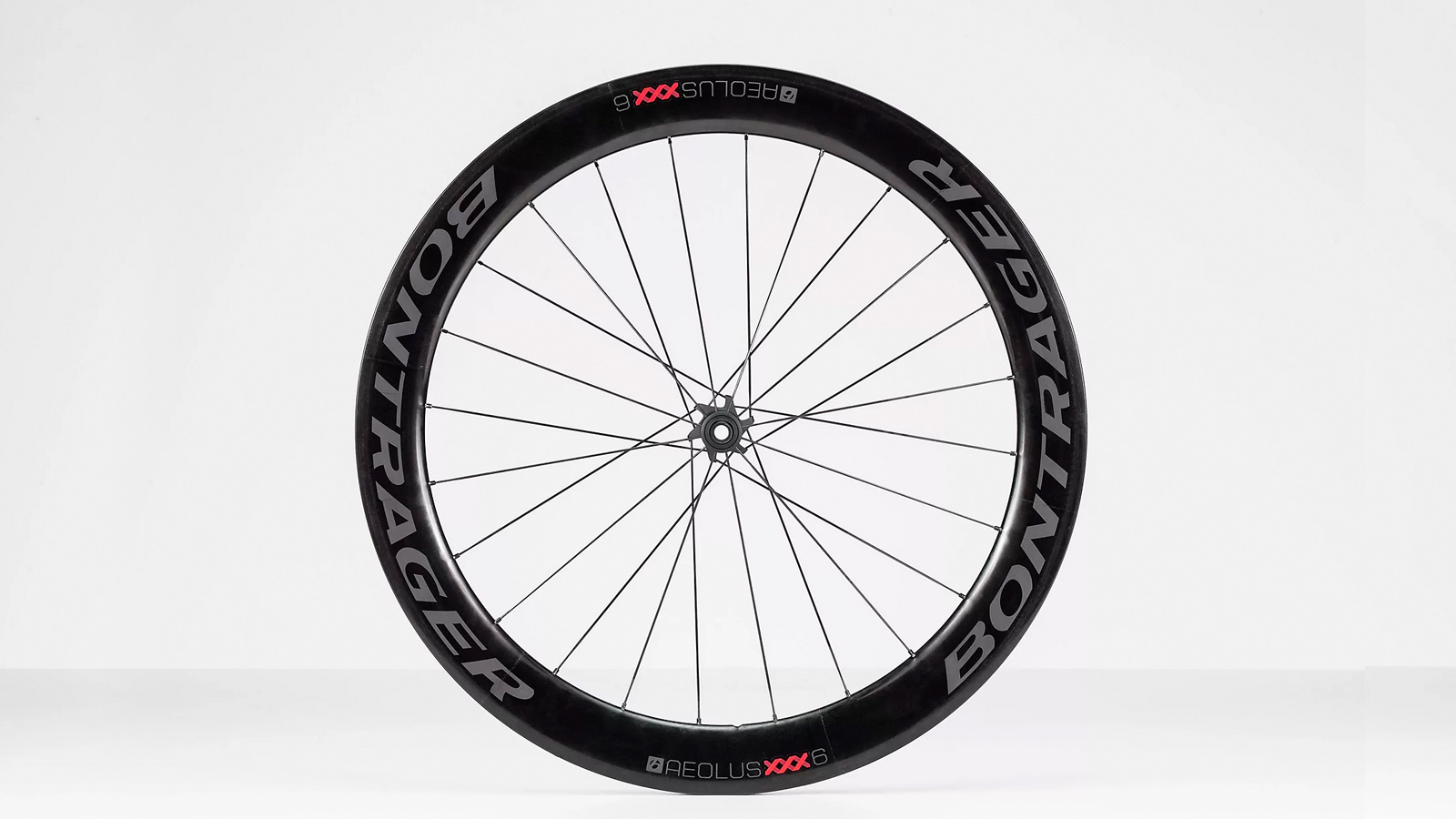
Aeolus XXX 6 TLR
Specifications
Reasons to buy
Reasons to avoid
60mm rims that measure 28mm at the brake track, the Bontrager Aeolus XXX 6 TLR are fast in a straight line and incredibly well behaved when the wind blows from the side. Despite the actual rim shape being more pointed than most, the wheels are surprisingly predictable with no big jerks or violent buffeting in the wind.
For those who are still on 'team rim brake', the Aeolus XXX 6 TLR have a laser-etched brake track which is predictable and quiet. They are available for disc brakes too and, as denoted by the TLR in the name, they're tubeless-ready.
Weighing 1530g, what's most surprising about the Aeolus XXX 6 is they are super laterally stiff but don’t rattle your bones in the way that tall carbon rims often do.
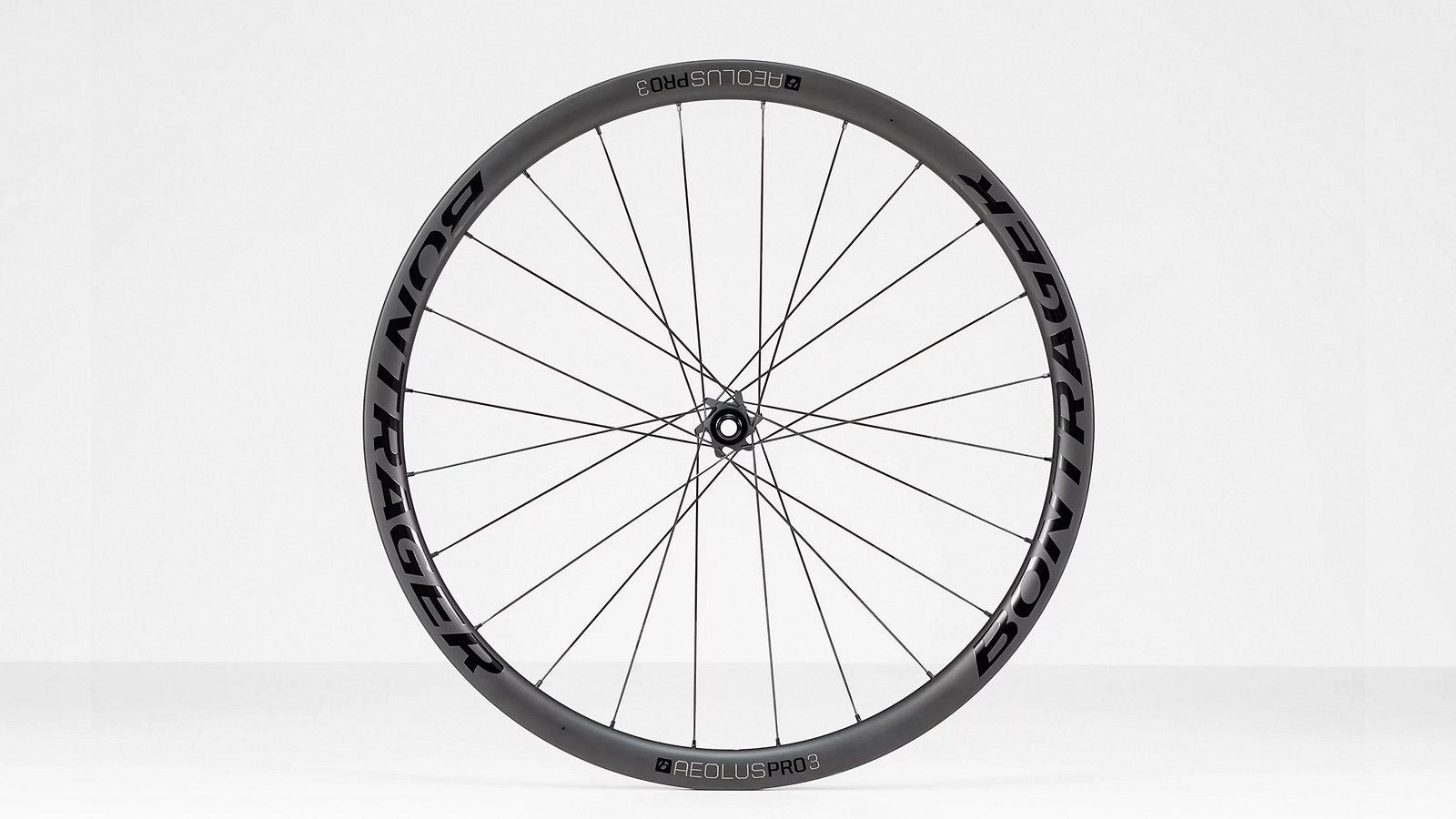
Aeolus Pro 3 TLR
Specifications
Reasons to buy
Reasons to avoid
Carbon wheels alone can cost more than some carbon road bikes, however, they don’t have to — as demonstrated by the Aeolus Pro 3. The 35mm deep rims are largely unaffected by blustery conditions and, measuring 19.5 mm between the tyre bead, the wheels are tubeless-ready too. This means wide rubber at low-pressure are well within the Aeolus wheelhouse (pun intended).
The Aeolus Pro 3V TLR feature the same D3, Dual Directional Design profile as the more expensive wheels in Bontrager's range — this shape is designed to cut drag at both the leading edge on the tyre side and rim side. Tipping the scales around 1600g, they aren’t breaking barriers on the scale, but they are still lively enough to facilitate quick changes in speed. Available in both rim and disc varieties, they demonstrate fantastic value for money.
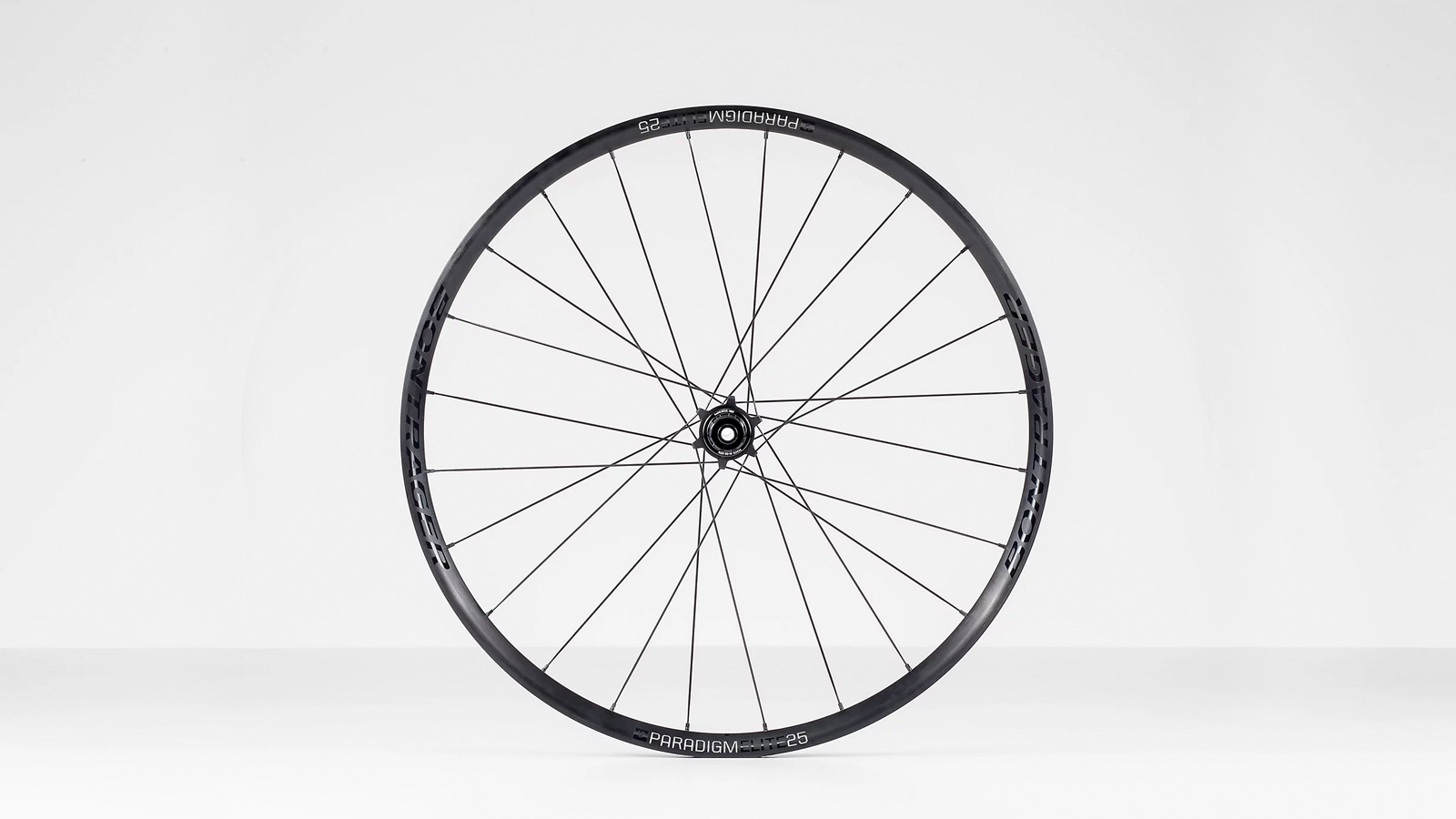
Paradigm Elite 25
Specifications
Reasons to buy
Reasons to avoid
There is no doubt carbon wheels are as lust-worthy as they come, but when it comes to value for money, you get a whole lot more performance out of an aluminium rim. At about half the cost of the rims above, you get a 1520g tubeless-ready wheelset that’s ideal for higher volume road tyres.
At 23mm deep, the ParadigmElite are disc only with Bontrager's Rapid drive 108 Road hubs which feature DT-Swiss Internals. Being tubeless-ready you get rim strips, valves and a valve core remover thrown in.
Bars / Stems
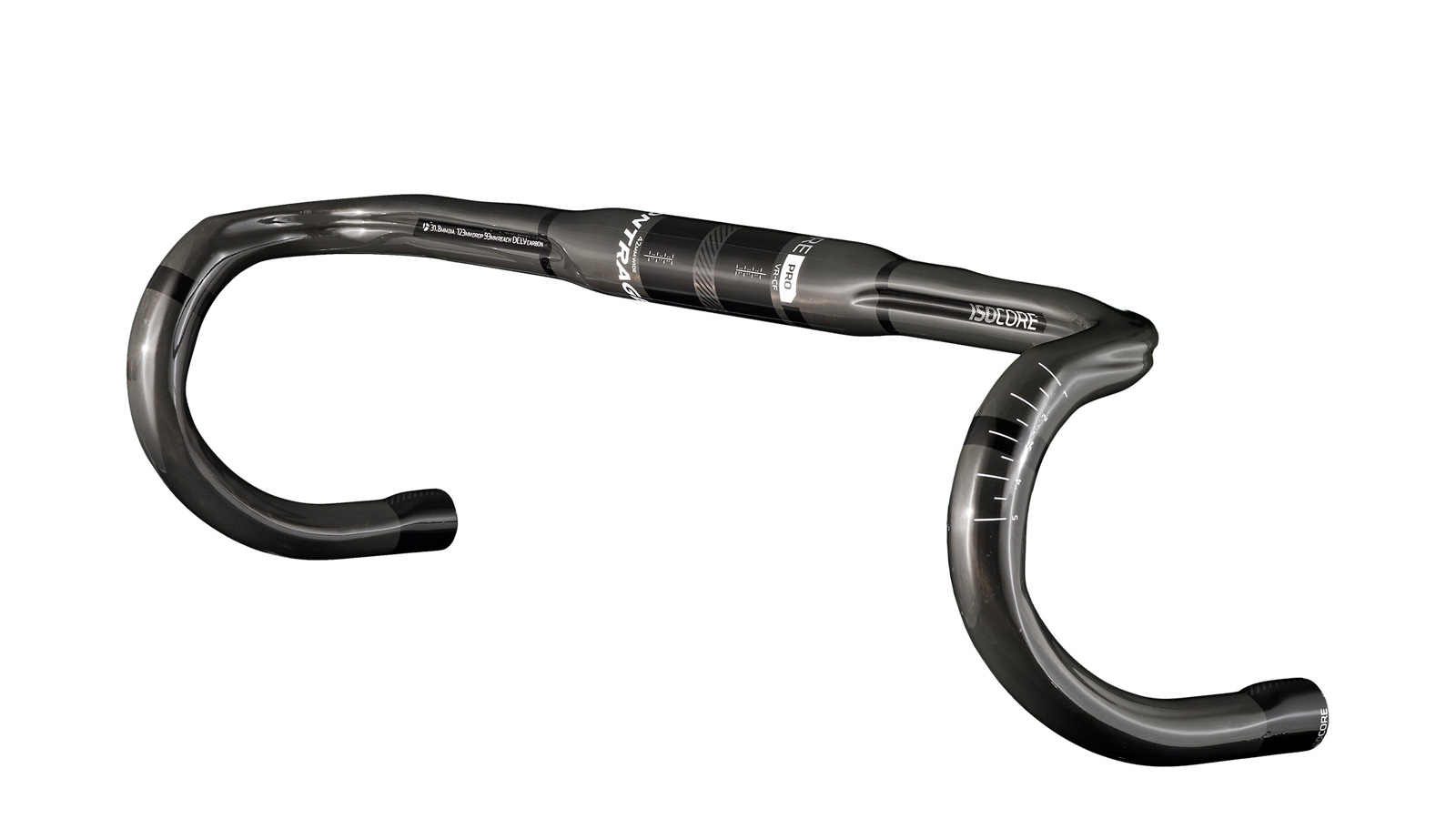
Pro IsoCore VR CF Road Handlebar
Specifications
Reasons to buy
Reasons to avoid
With people taking road bikes into ever more rugged locales, comfort can be an uphill battle. The IsoCore VR CF Road Handlebars are made from Bontrager's OCLV Carbon and the brand has interspersed an elastomer material into the layup to absorb vibration. The bars also feature recesses in the tops and drops that allow the EVA IsoZone Pads to be wrapped under the handlebar tape without sticking out like a sore thumb.
Available in 400mm and 460mm widths, the bars have a compact bend with 123mm of drop and 93mm of reach.
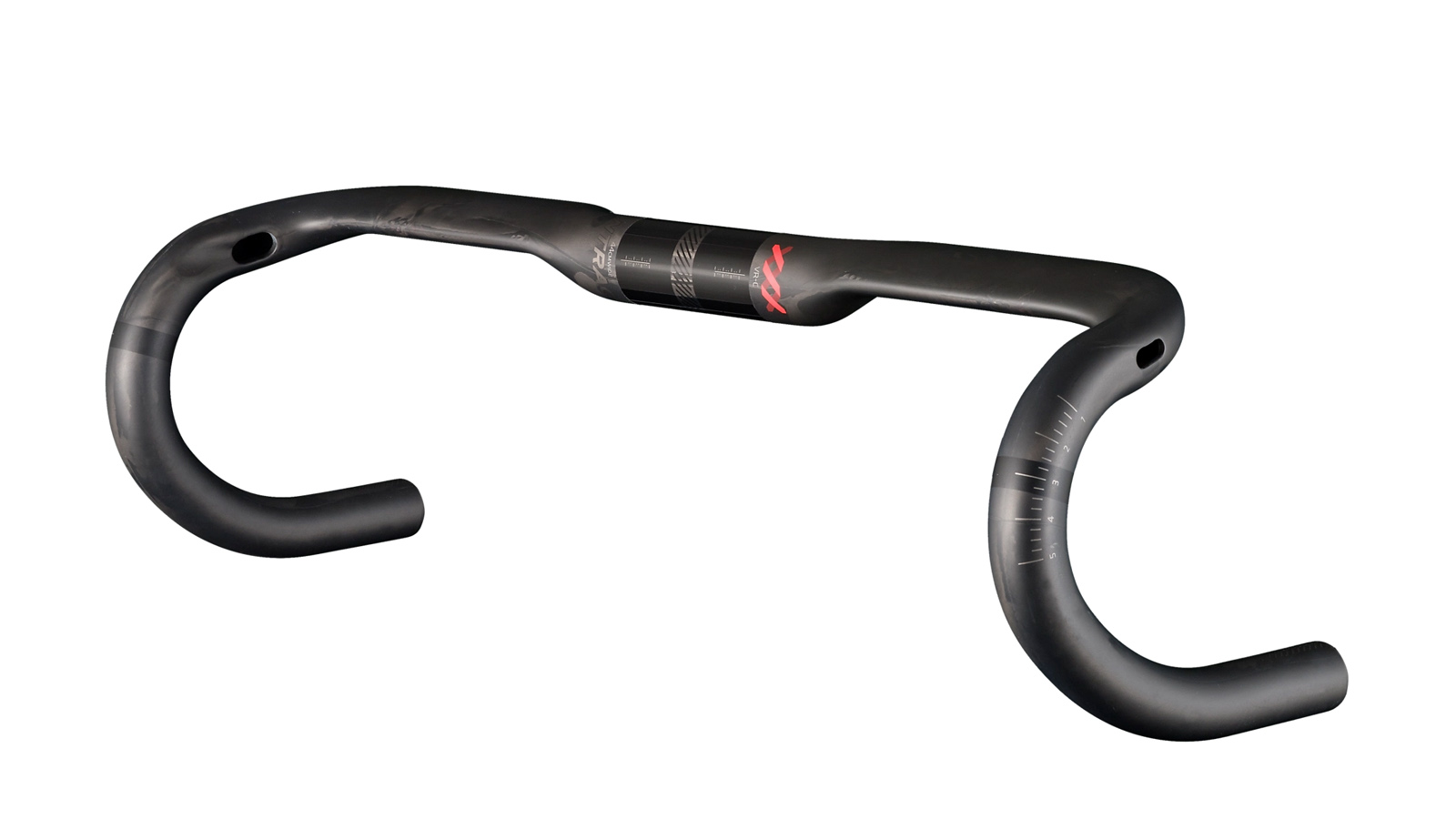
XXX Aero Handlebar
Specifications
Reasons to buy
Reasons to avoid
In recent years we’ve learned how a few tweaks to your cockpit can have a profound effect on the aerodynamics of your bike. While the integrated one-piece bar and stem combos provide the most benefit, they make changes to fit an expensive prospect.
According to Bontrager, the XXX Aero bar can save you 23-seconds per hour over a traditional round bar. We can't speak to the accuracy of these claims, but what we do know is the aero profile is comfortable on your hands and the cable routing isn’t impossible to run. The carbon bars also do well to dampen high-frequency road vibration and tip the scales at 240g in the 420mm width.
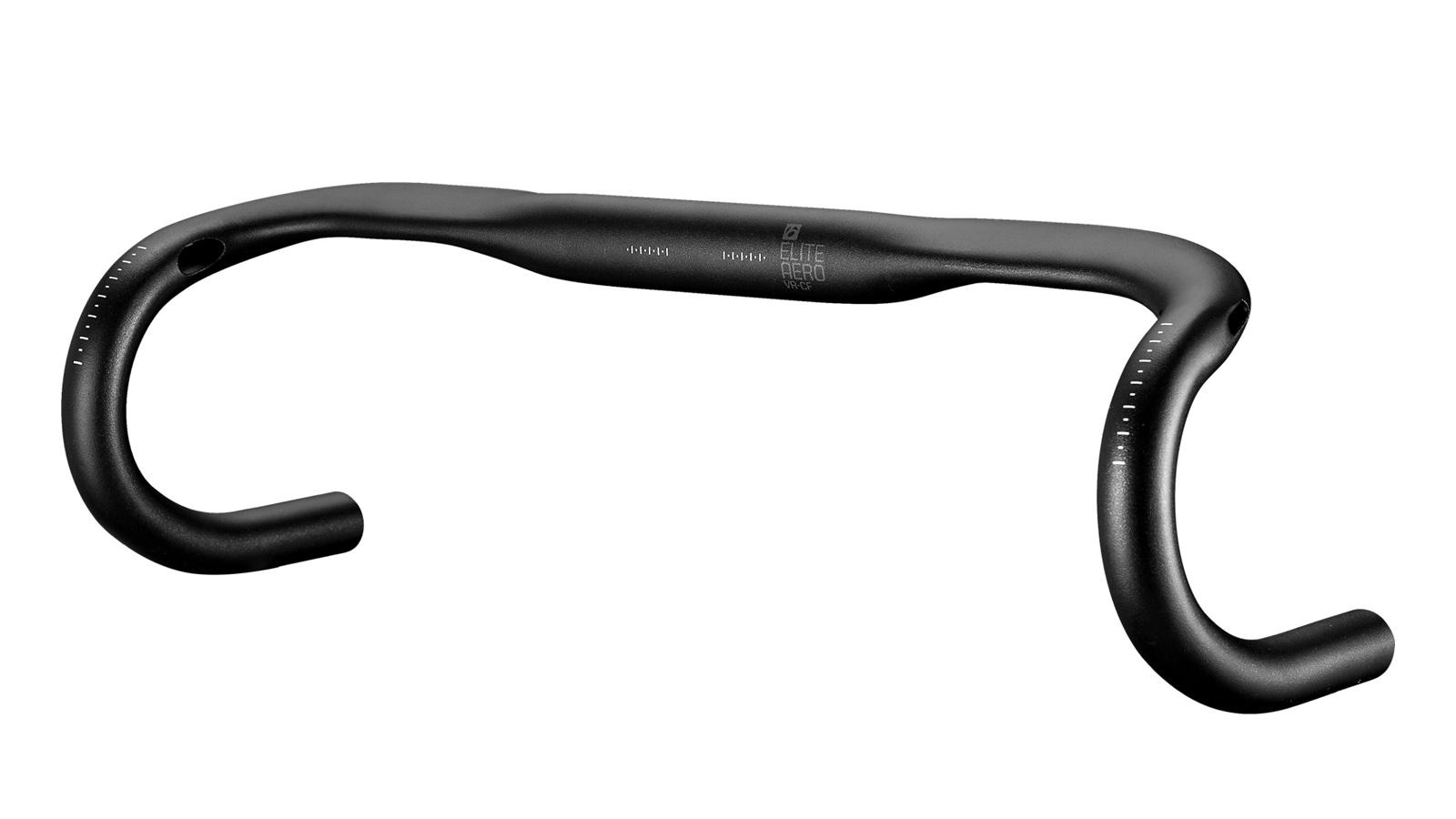
Elite VR-C Road Handlebar
Specifications
Reasons to buy
Reasons to avoid
There is no getting around the fact that carbon bars are pricy. If you’re sold on the broad tops which are comfortable on your hands and simple internal cable routing without the price tag, then the Elite Aero VR-CF bars are your ticket. Bar material aside they are identical.
Plus being made of aluminium, they are less susceptible to damage than their carbon brand mates
Saddles
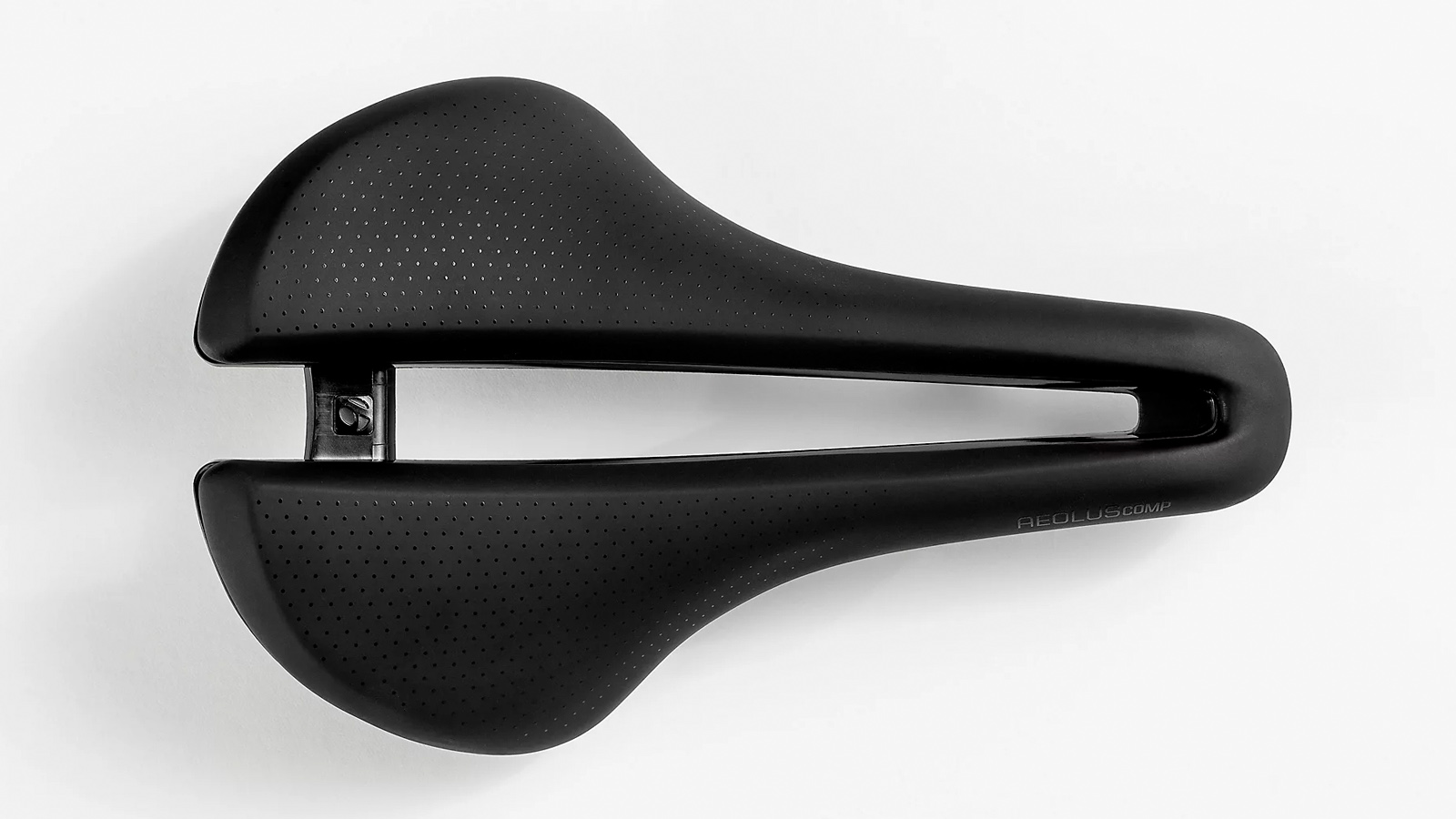
Aeolus Elite
Specifications
Reasons to buy
Reasons to avoid
Just about every brand has its short saddle with a broad, pressure-relieving channel in the middle and a wide nose — Bontrager calls theirs the Aeolus. The cutout runs nearly the entire length of the saddle and the rails are housed right at the front, which is said to add compliance and comfort.
We've featured the Elite version here which has Austenite rails (claimed to be lighter and stronger than titanium) and a composite shell. It comes in a Pro version with carbon rails and a Comp version with steel.
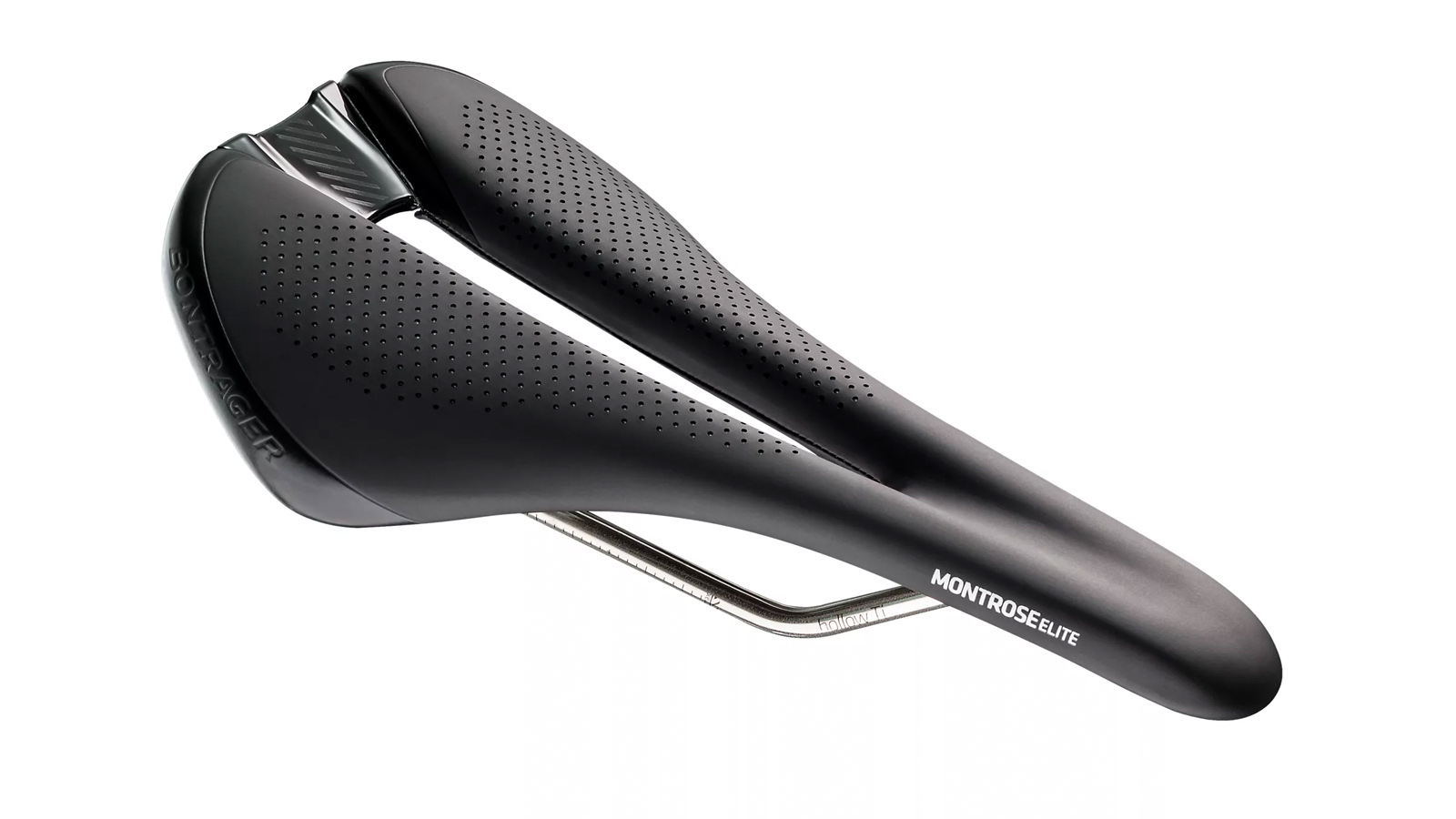
Montrose Elite
Specifications
Reasons to buy
If you’ve ridden or purchased a Trek bike in the past five or so years you’ve probably used a Montrose saddle — the brand still specs it on everything from dual-suspension mountain bikes to the lightweight Emonda. Based on the brand's Posture 2 position, it’s a shape that a wide variety of people seem to like with a wide cut out and broad nose.
Underneath are hollow titanium rails and the edges are covered in an abrasion-resistant polymer to prevent rips, while the carbon fibre reinforced shell finds a good balance between strength and weight. Bontrager also offers a carbon-fibre- and a steel-railed version too.
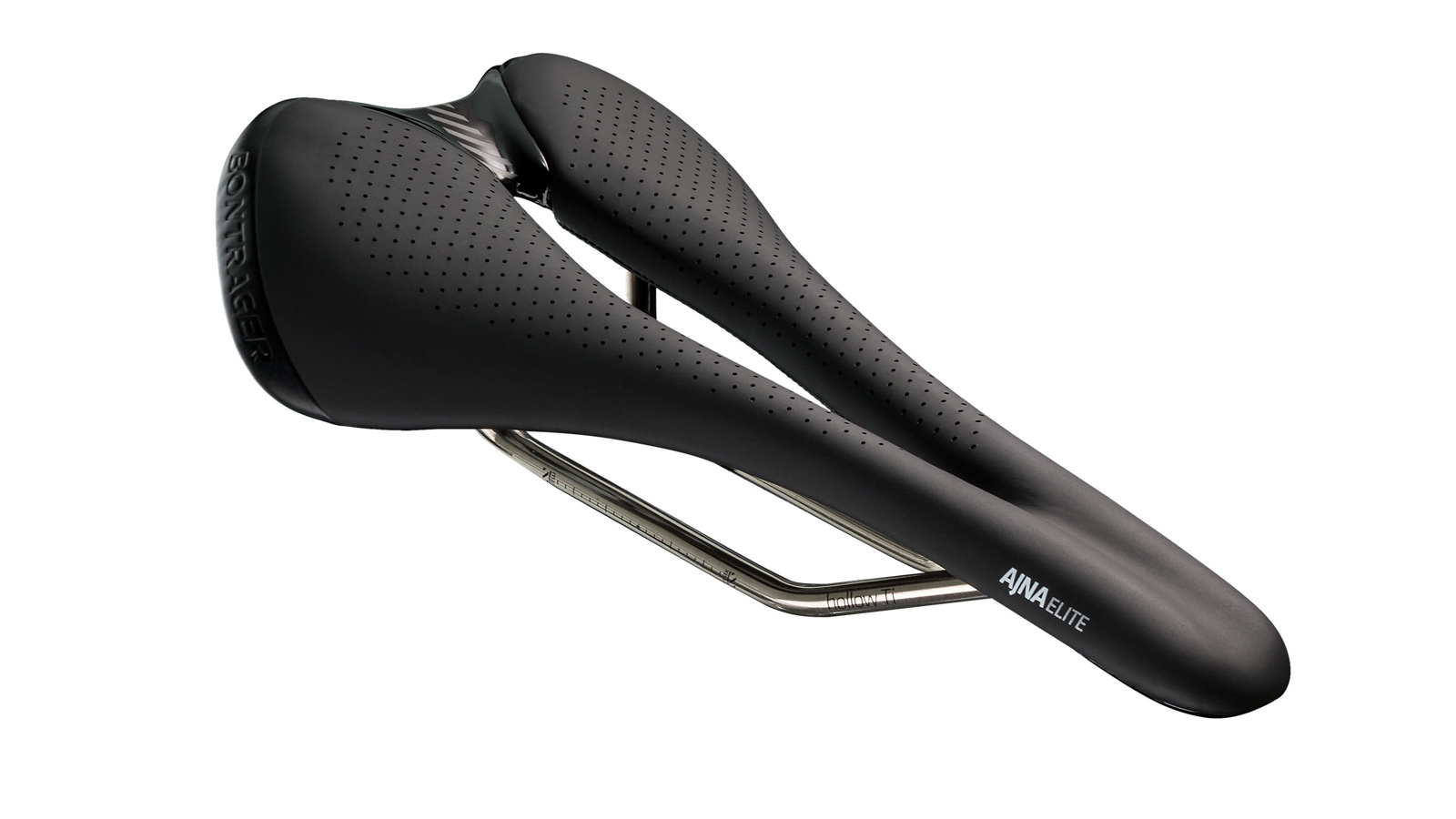
Ajna Elite
Specifications
Reasons to buy
Reasons to avoid
The Ajna is a women’s specific saddle also based around the Posture 2 shape with a wide cutout that is designed to work well on both road and mountain bikes — it also happens to be road World Champ Mads Pedersen’s saddle of choice.
Like the Montrose, it features a broad nose and polymer anti-abrasion panels on the back, but it's a bit flatter and wider in overall shape. The Elite models come with hollow titanium rails while Bontrager offers the saddle with carbon rails for the lightweight hill climbers or steel rails for those on a tighter budget.
The latest race content, interviews, features, reviews and expert buying guides, direct to your inbox!
Based on the Gold Coast of Australia, Colin has written tech content for cycling publication for a decade. With hundreds of buyer's guides, reviews and how-tos published in Bike Radar, Cyclingnews, Bike Perfect and Cycling Weekly, as well as in numerous publications dedicated to his other passion, skiing.
Colin was a key contributor to Cyclingnews between 2019 and 2021, during which time he helped build the site's tech coverage from the ground up. Nowadays he works full-time as the news and content editor of Flow MTB magazine.